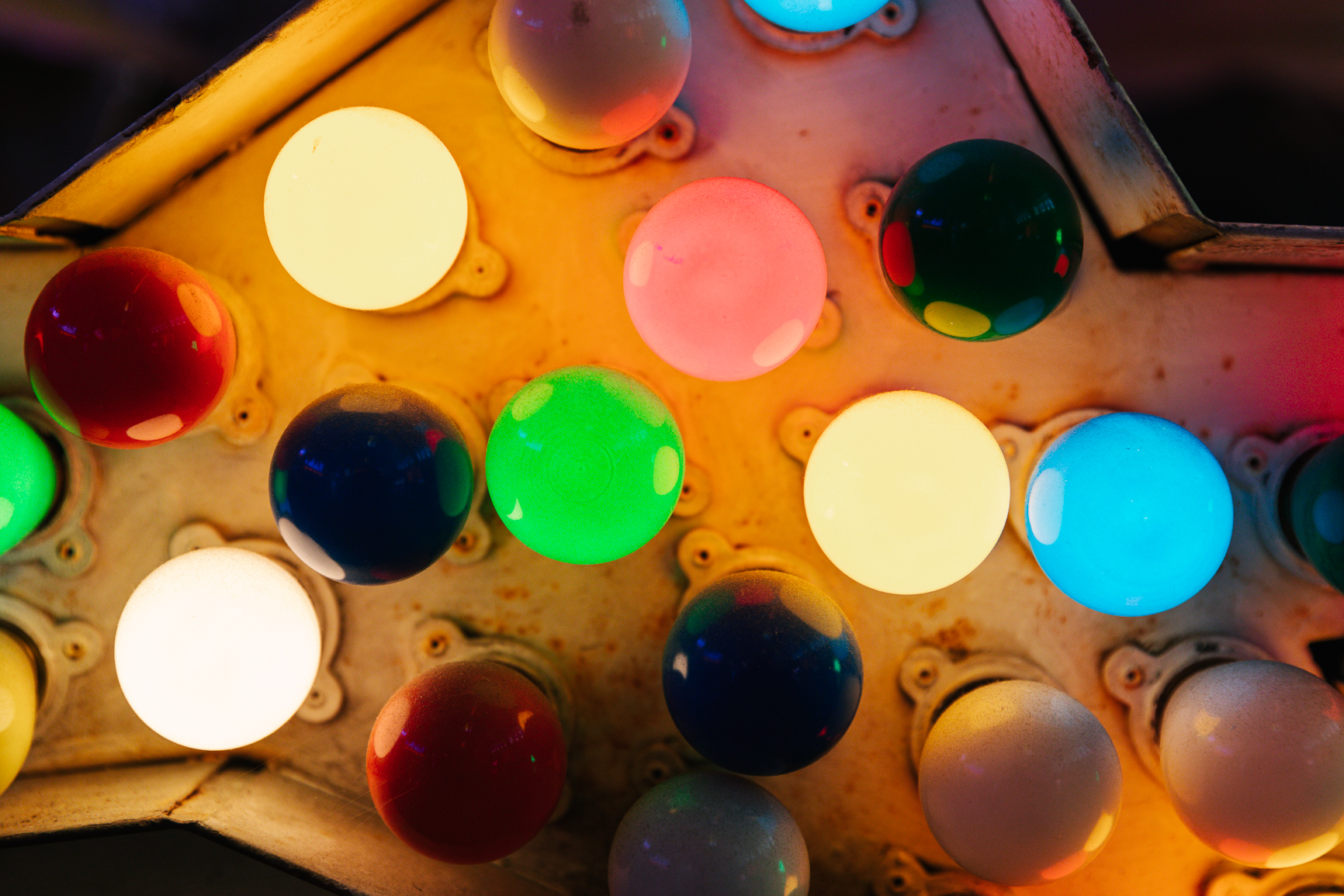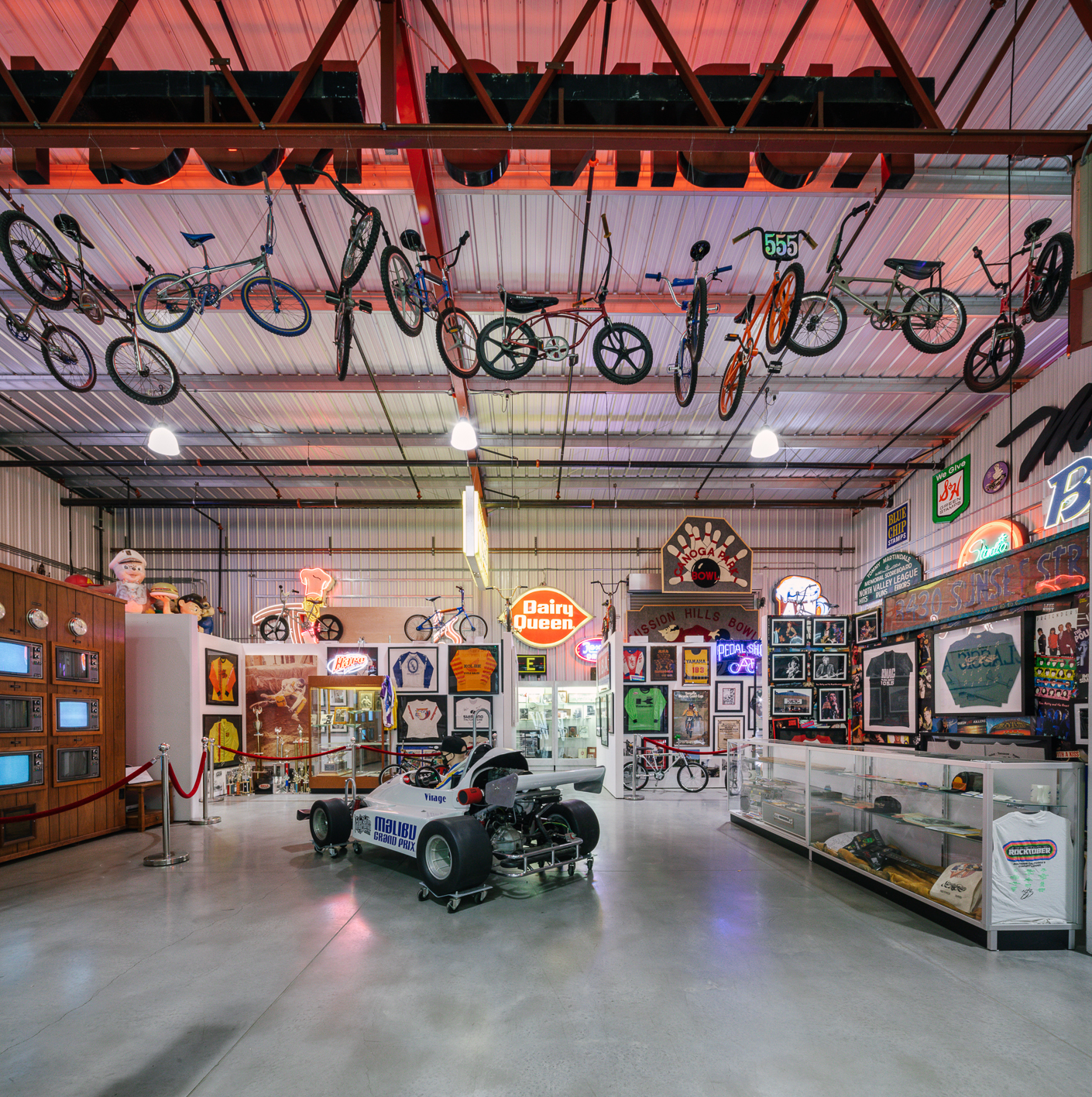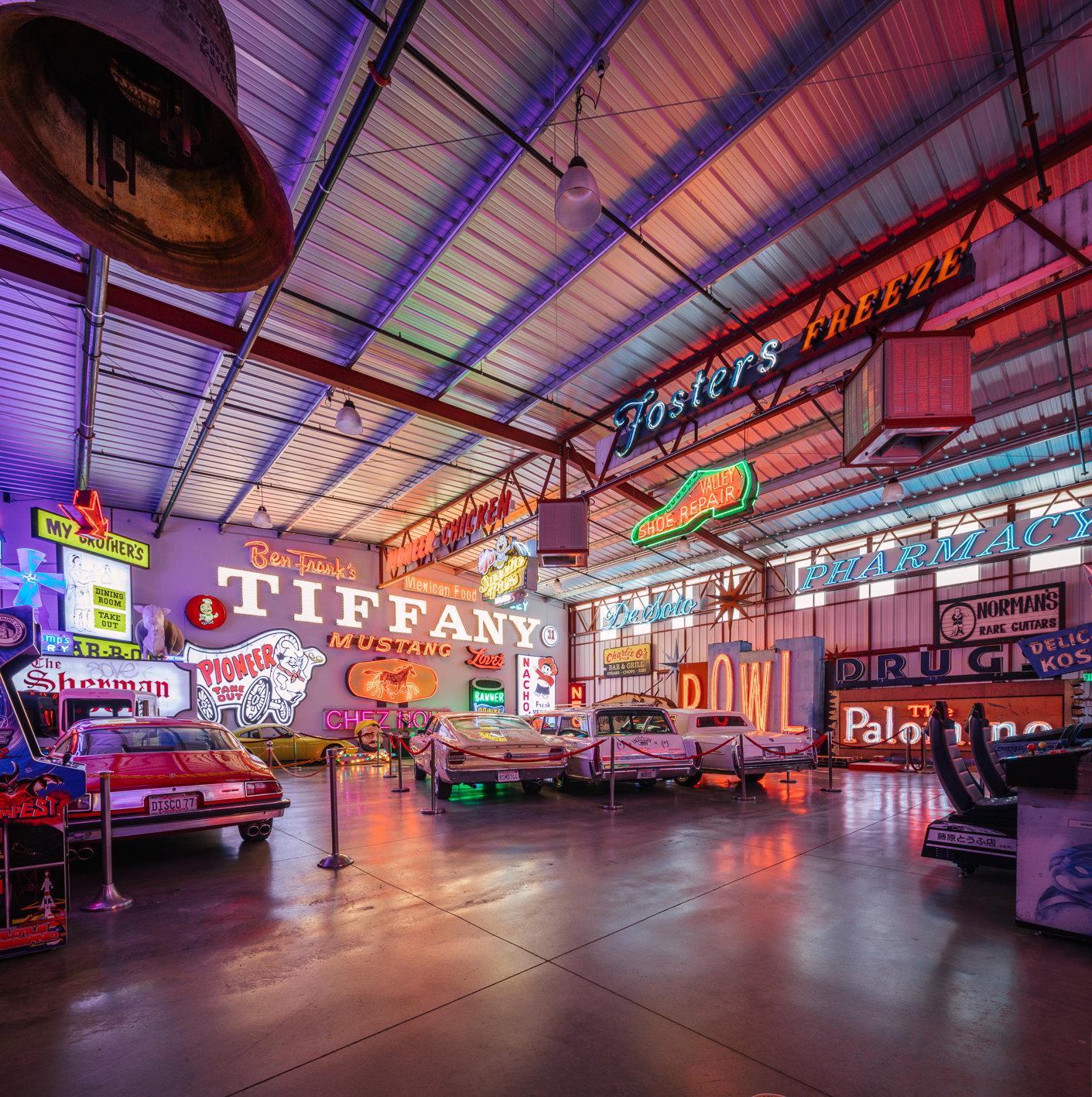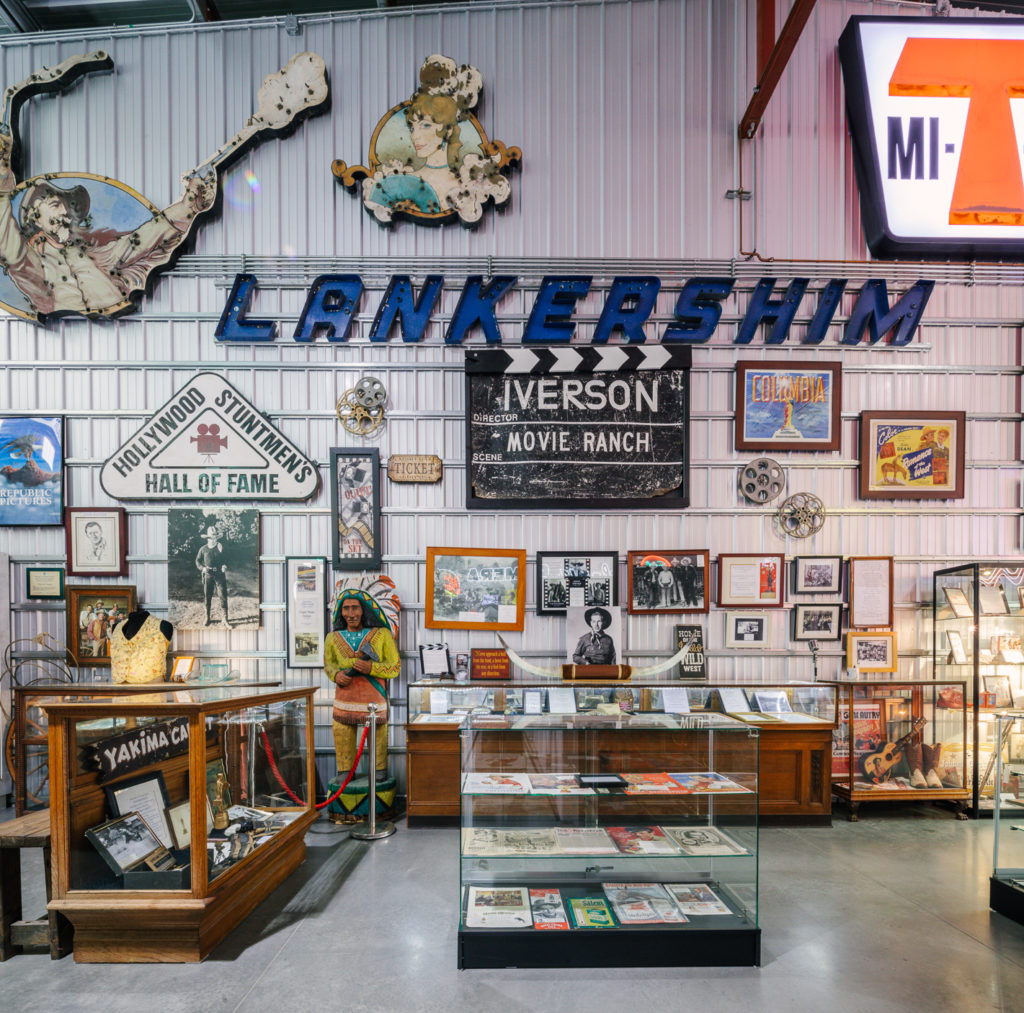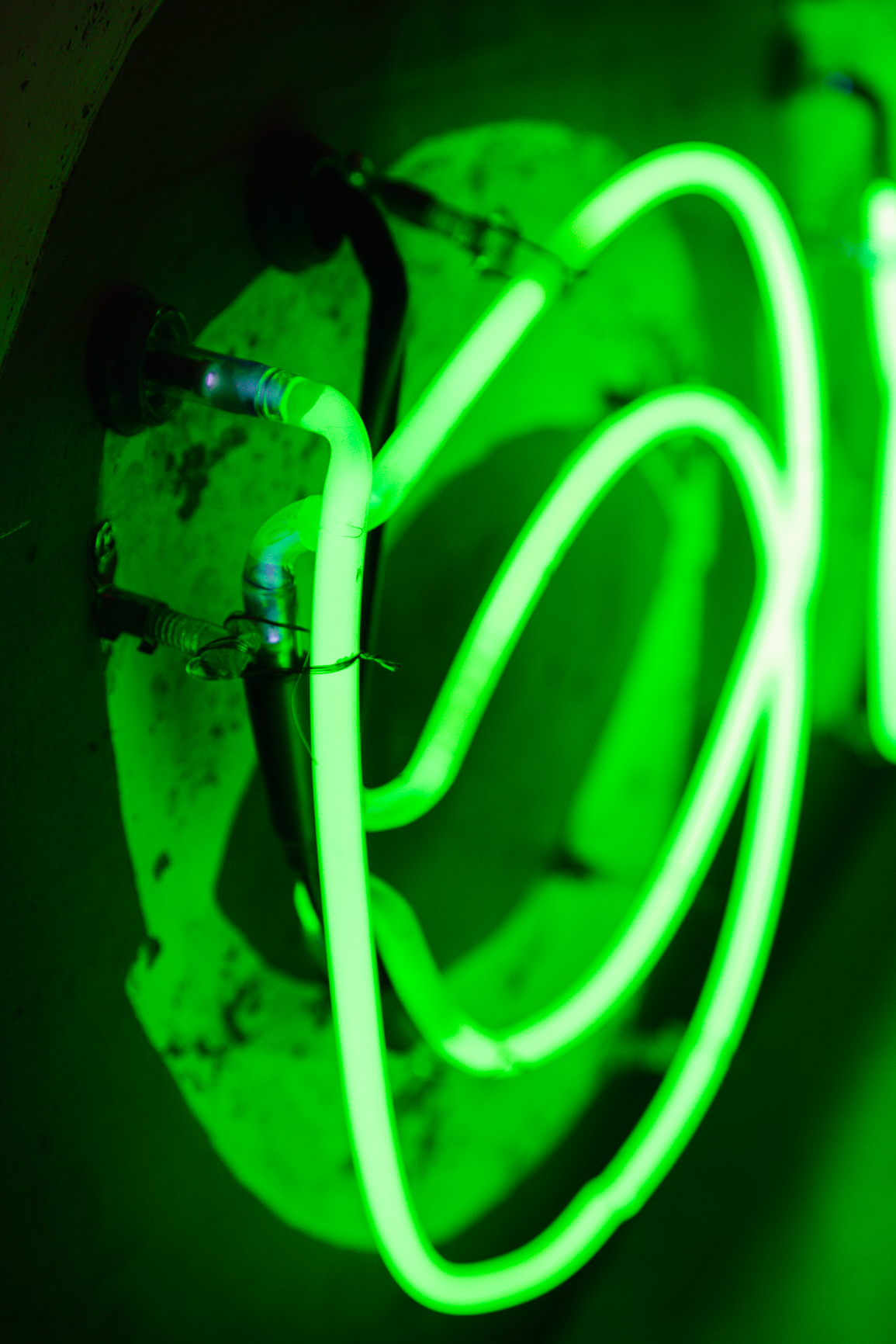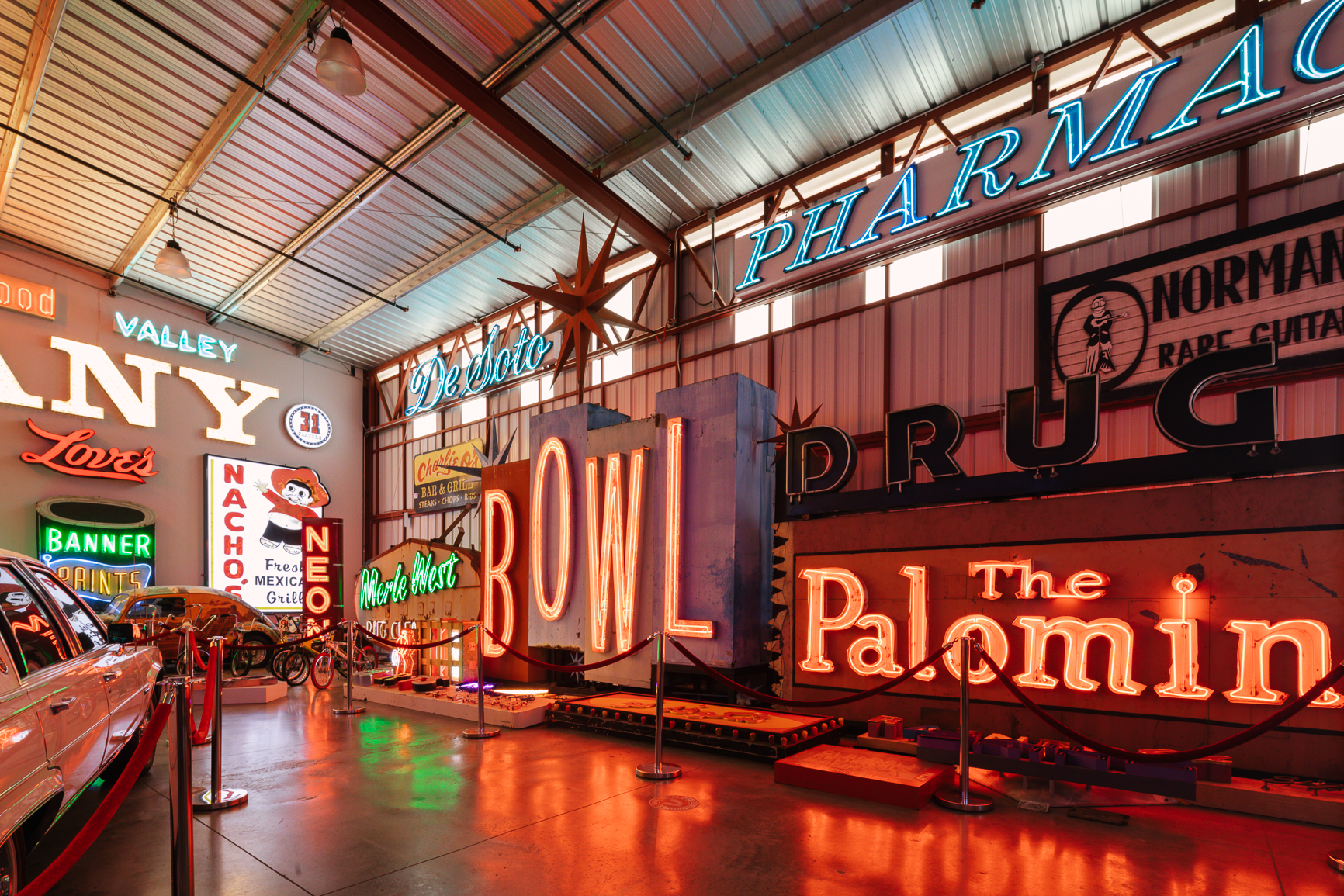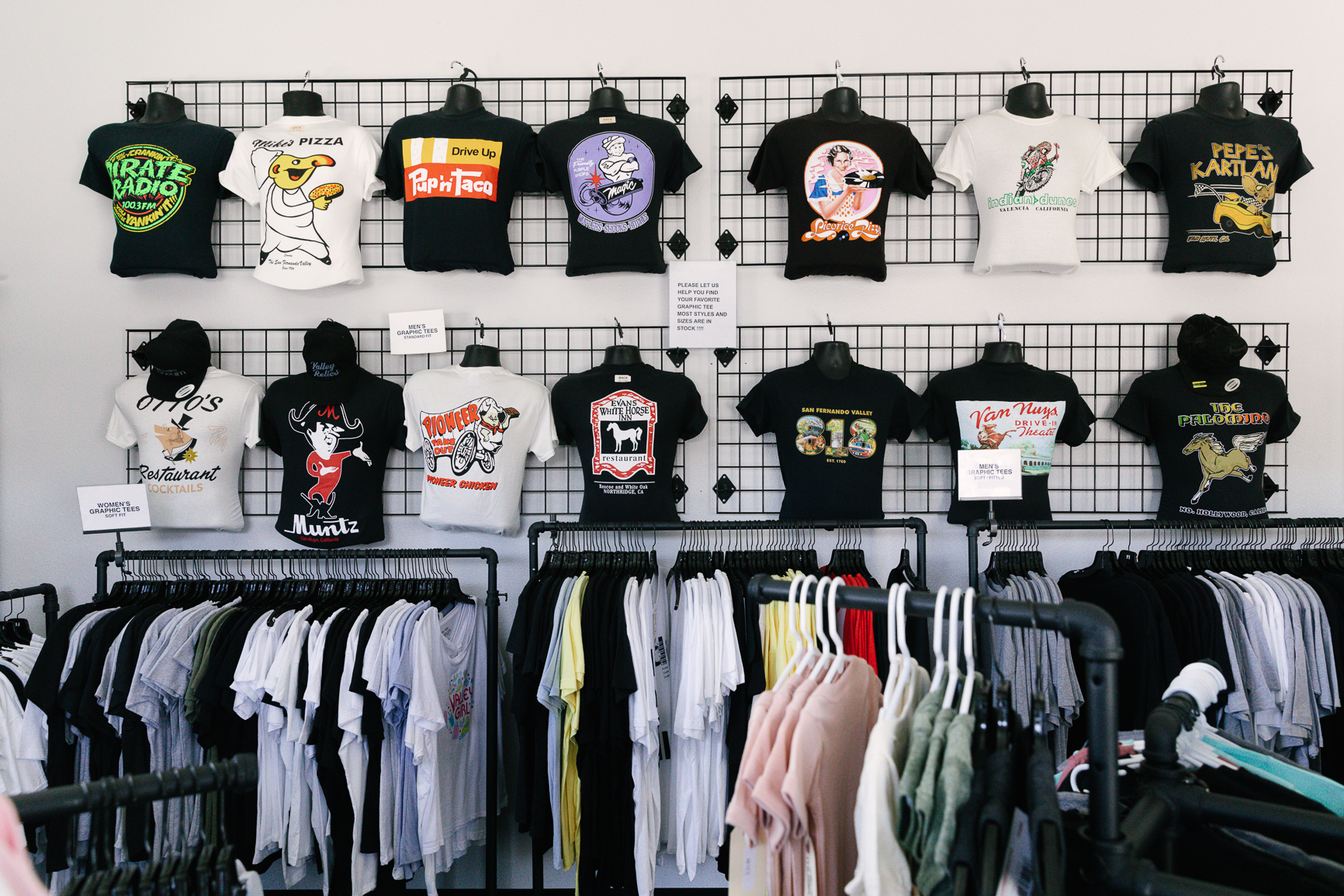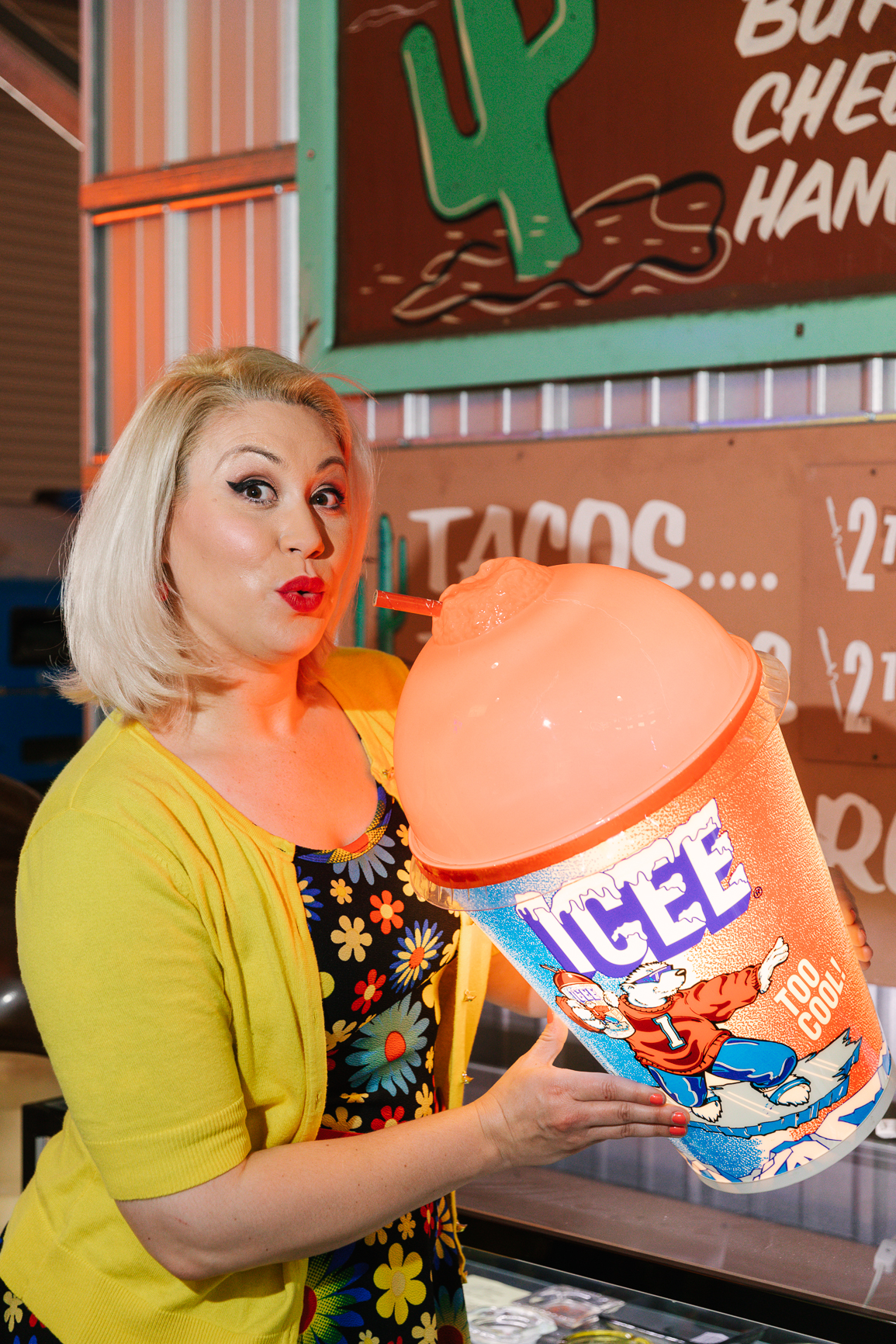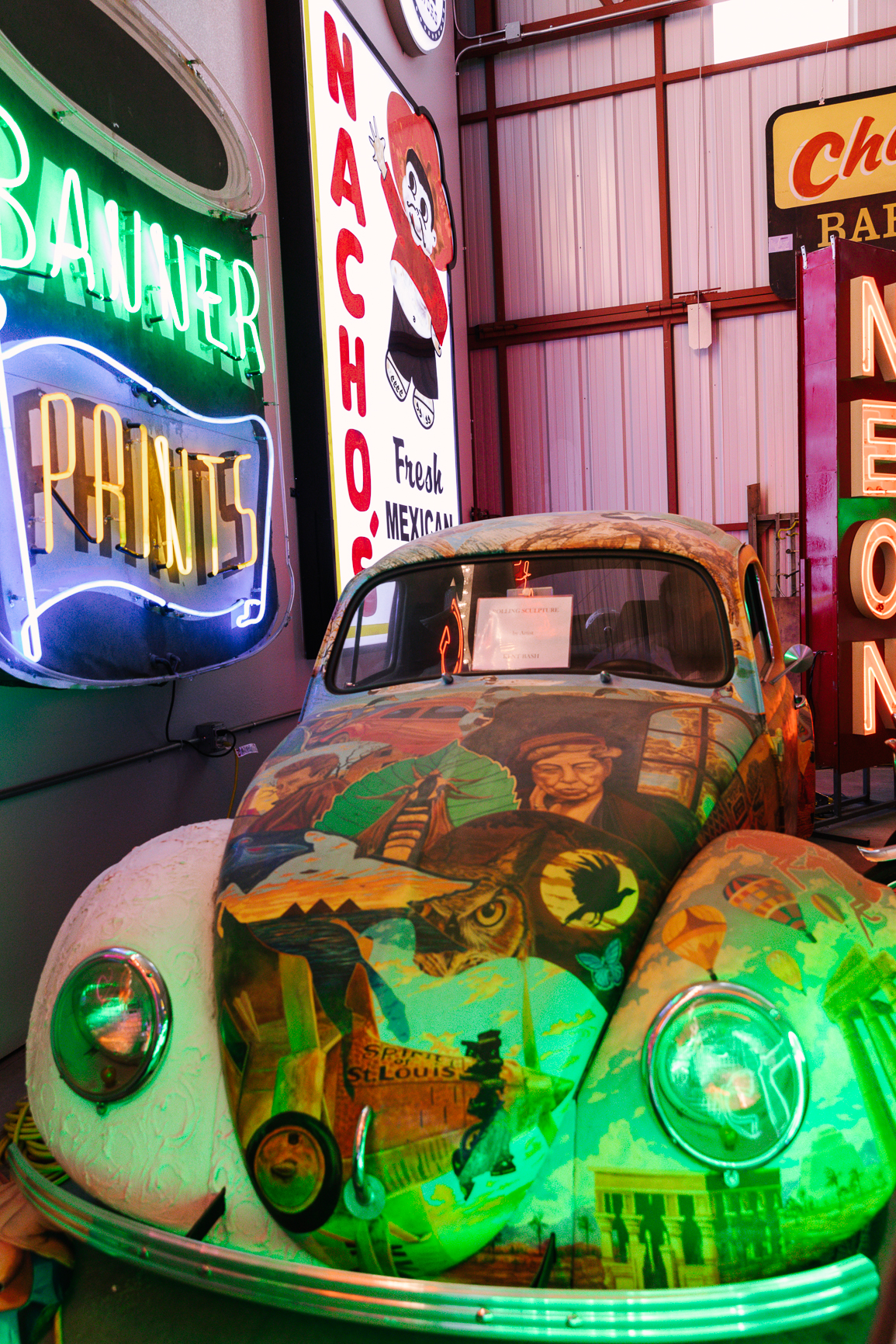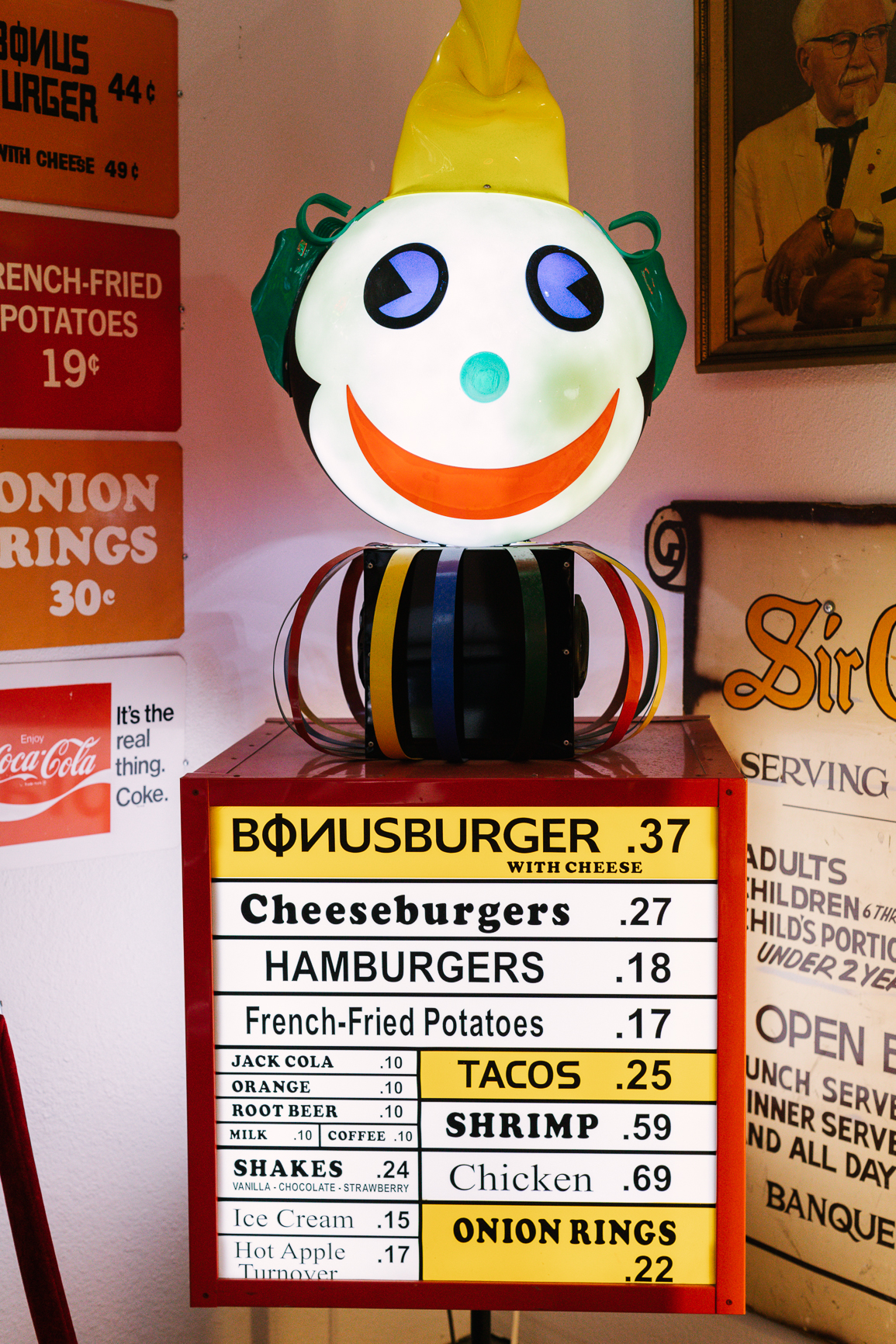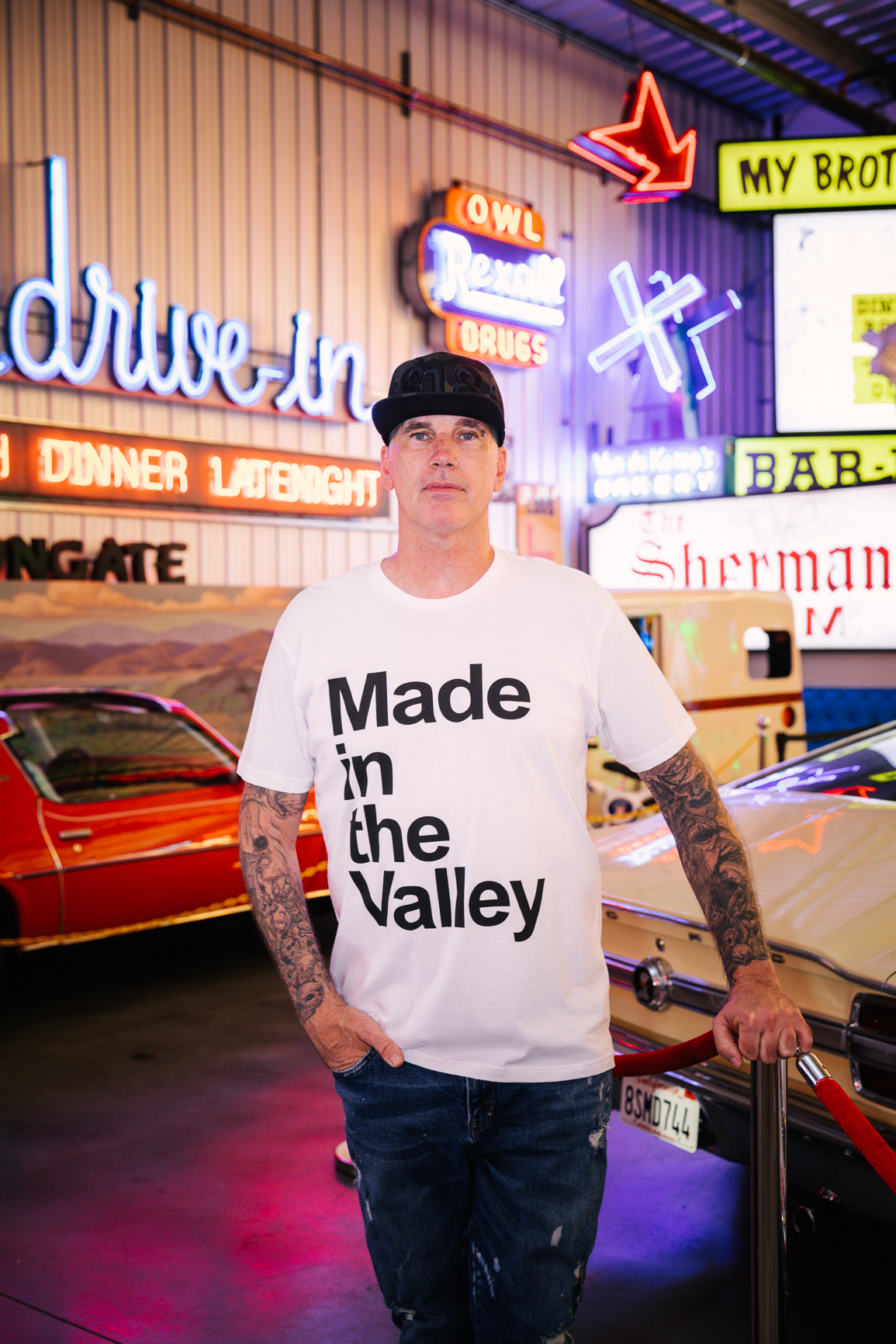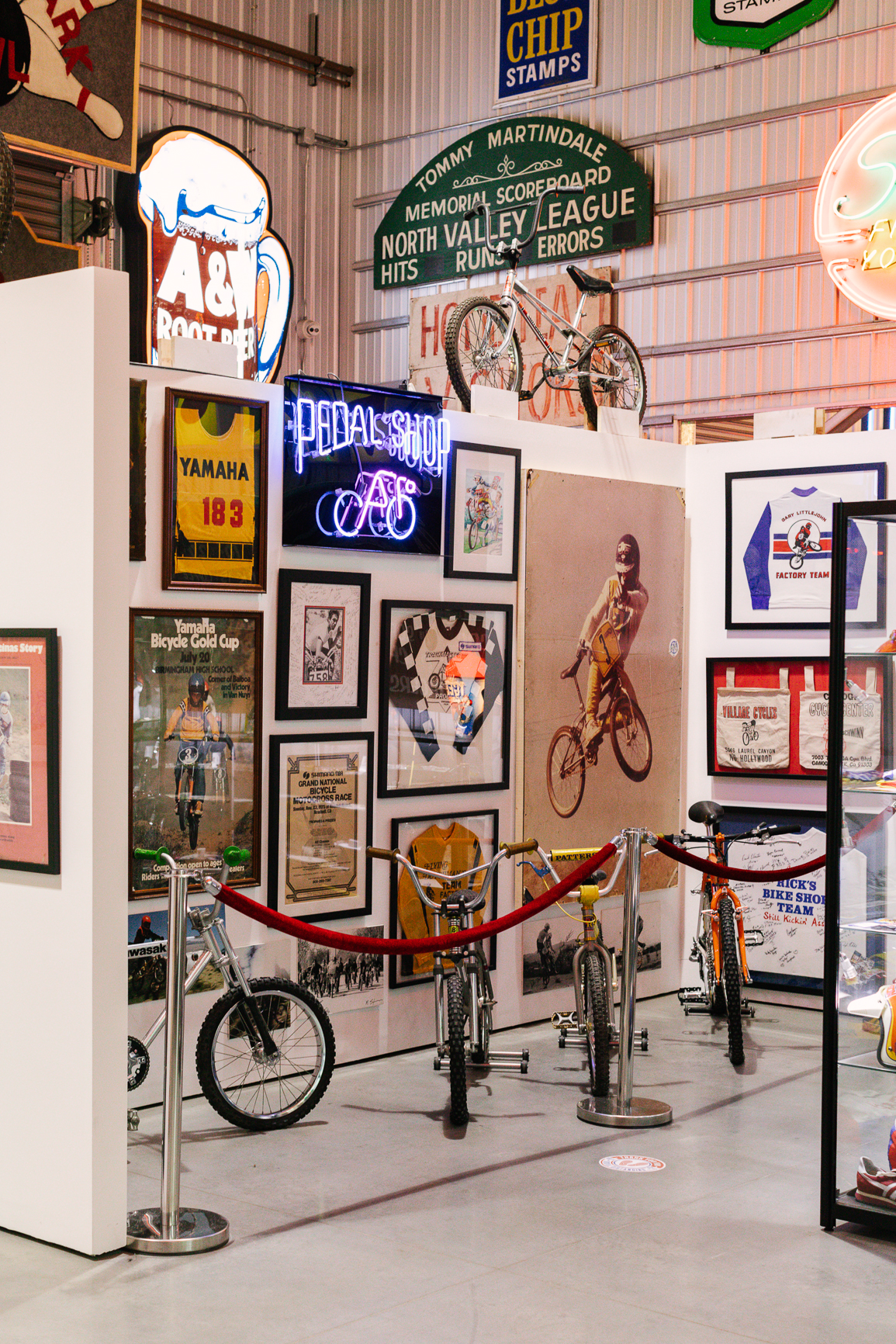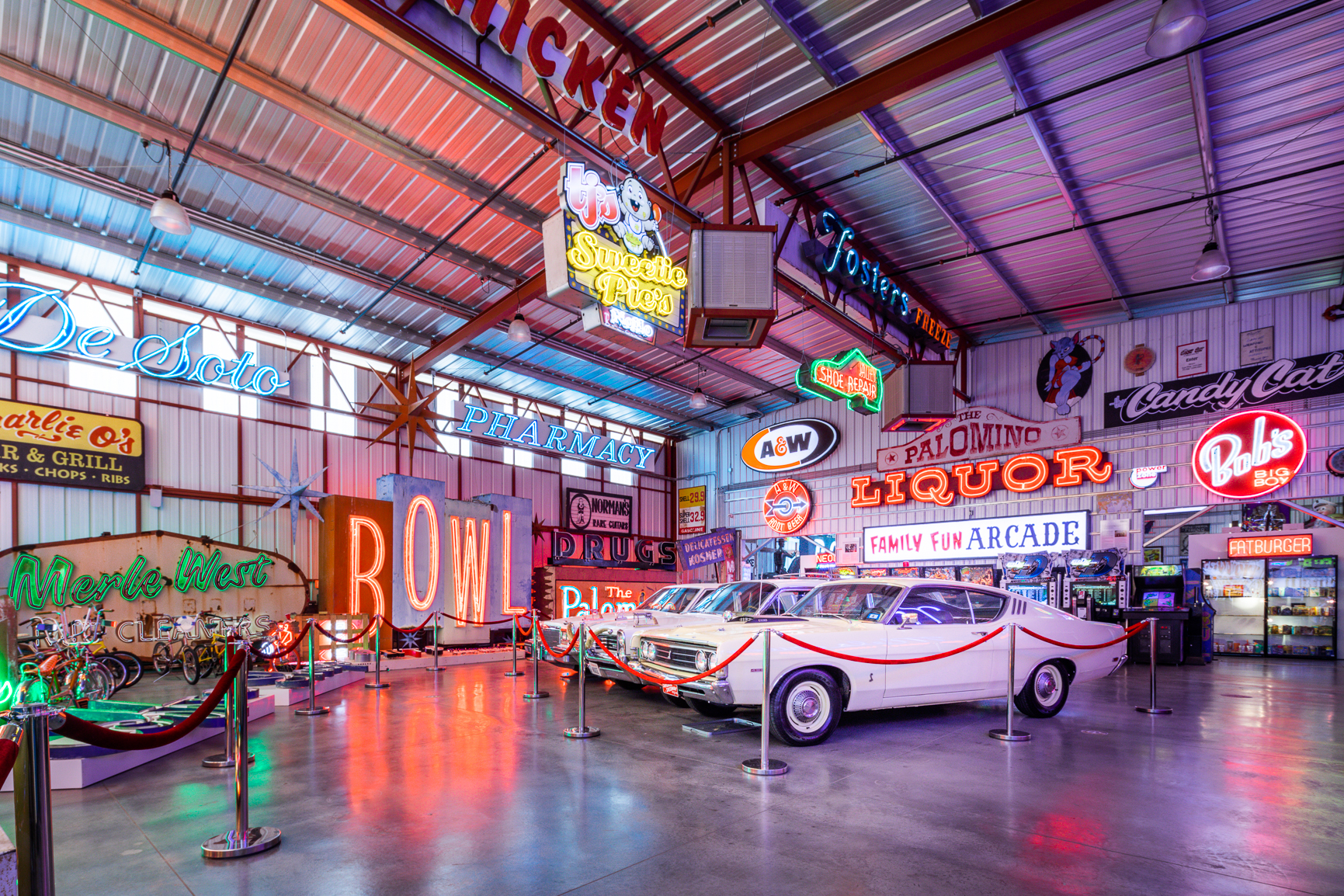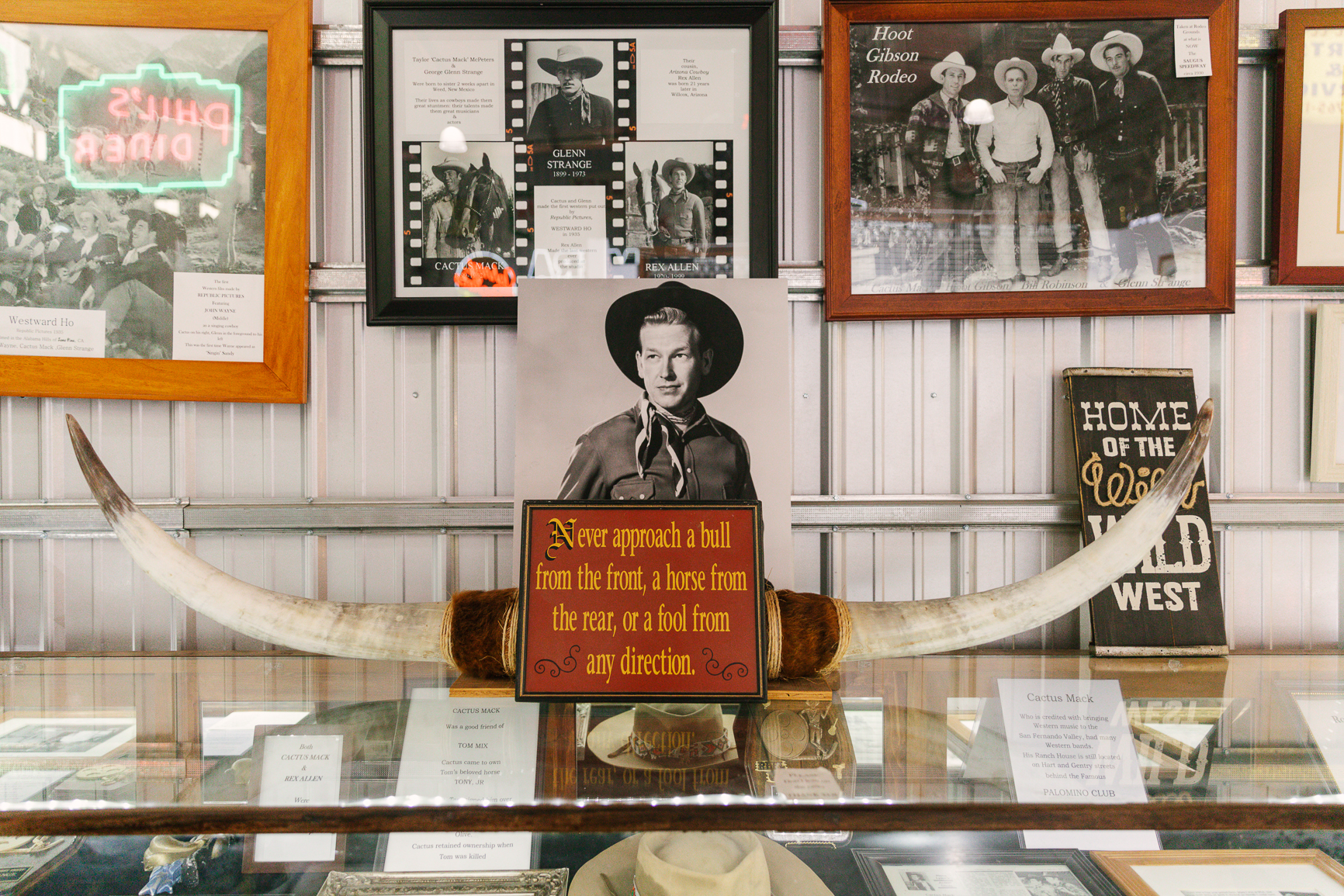Inside The Valley Relics Museum – Plan A Wedding Like No Other!
Behind this grey and very unassuming airplane hanger, tucked in near the Van Nuys airport in Los Angeles, California, lies thousands of memories and hundreds of years of colorful San Fernando Valley buried treasure just waiting to be discovered by YOU! Welcome to the one and only, Valley Relics Museum. A very unique and one of a kind location, this museum could be perfect for your next unique event or untraditional wedding celebration. Come a long as we show you around.
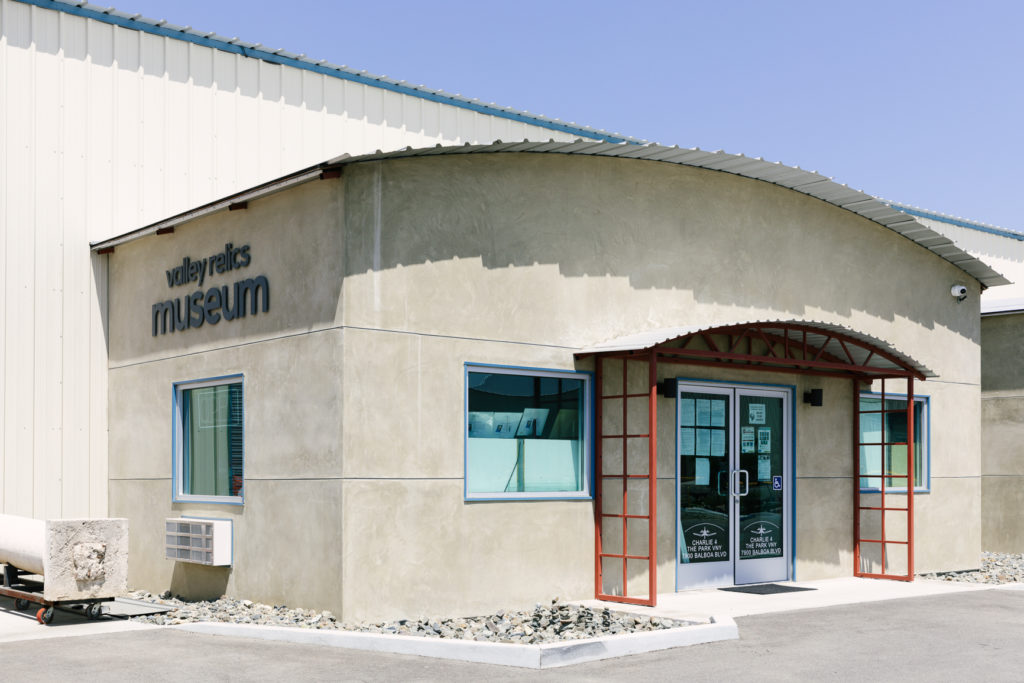
As you step through the double front doors, you are transported back through the nostalgia, historical significance, and impact ‘The Valley’, as us locals call it, had and continues to have on the city of Los Angeles as a whole.

The San Fernando Valley is located in Los Angeles County, California. It includes the cities of Burbank, Glendale, San Fernando, Hidden Hills, and Calabasas, as well as many smaller neighborhoods within the city of Los Angeles, such as Northridge, Arleta, Canoga Park, Chatsworth, Encino, Granada Hills, Lake View Terrace, Mission Hills, North Hollywood, North Hills, Pacoima, Panorama City, Porter Ranch, Reseda, Sherman Oaks, Studio City, Sun Valley, Sunland, Sylmar, Tarzana, Toluca Lake, Tujunga, Van Nuys, Valley Village, West Hills, Winnetka, and Woodland Hills.
Now you understand why Los Angeles is a BIG, little town!
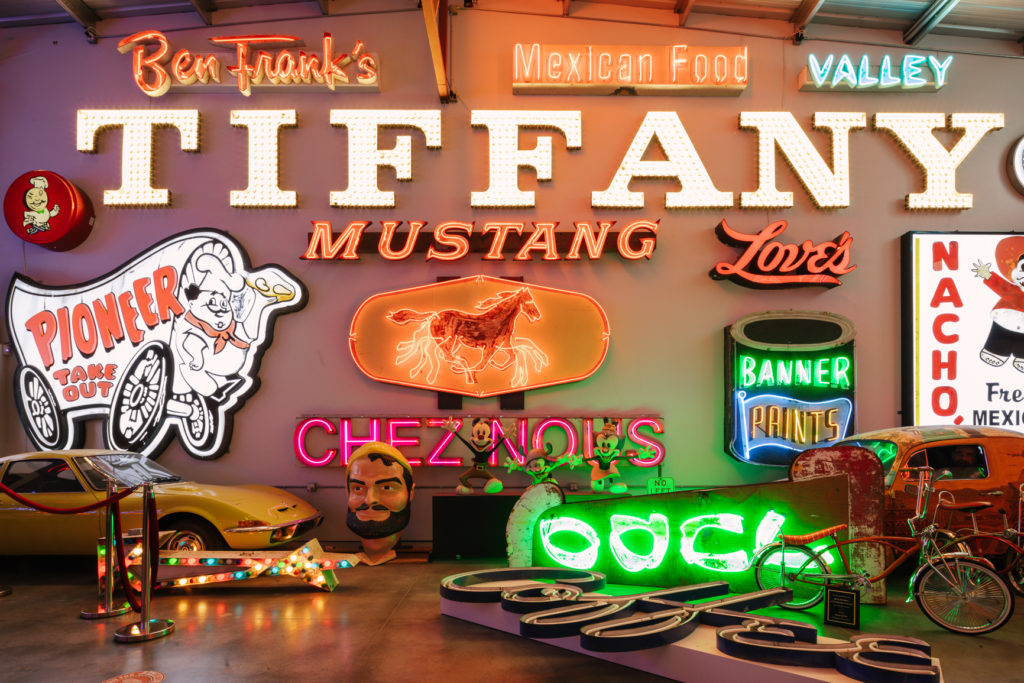
Here is the man behind 22 years of collecting and hundreds of years of historical salvage, Valley Relics founder, Tommy Gelinas. A local, born and raised in the very area his collection now dwells, Tommy lives, breaths, and shares the culture of ‘The Valley’ in everything he does.
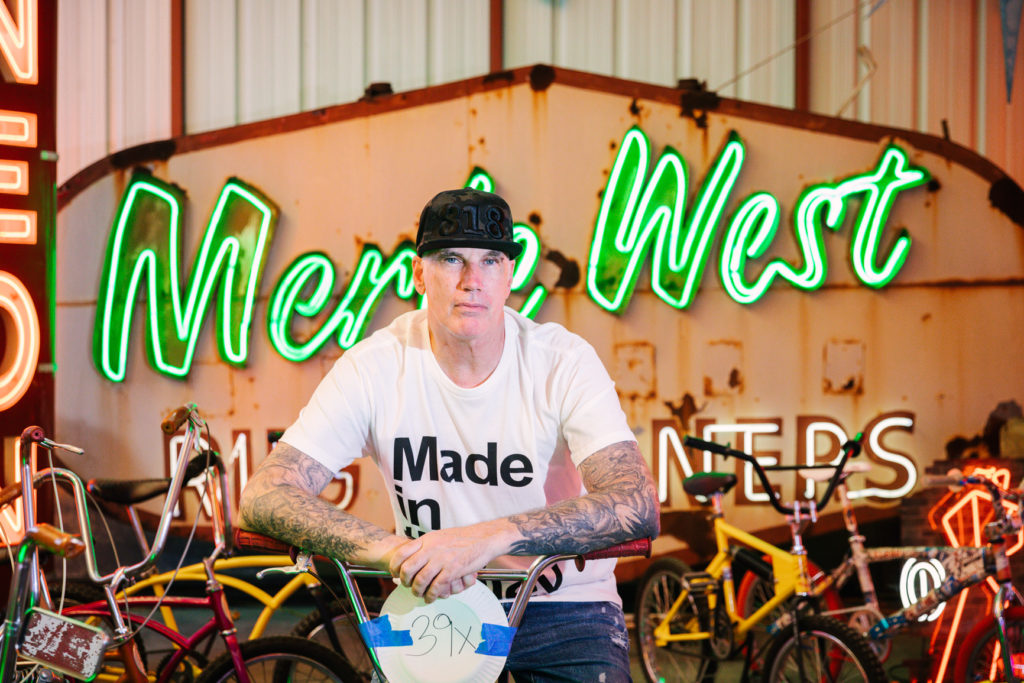
The Museum Man
“Our endeavor is to collect, preserve, interpret, and present the history of The San Fernando Valley and surrounding areas in order to share with residents and visitors alike the stories of those who shaped the region and its role in the nations development.”
-Tommy Gelinas
The Valley Relics Museum boasts its vast collection of historical artifacts pertaining to The San Fernando Valley and surrounding areas. The collection includes rare documents, photographs, vintage neon signs, postcards, flags, yearbooks, negatives, clothing, books, art, automobiles and BMX bikes from The Valley’s near and dear past.
In 2013, Tommy opened the first Valley Relics Museum in a Chatsworth warehouse. Outgrowing that space in just a few years, in November 2018 he moved the museum to its current home, which features over 25,000 items and is probably only a third of the collection.
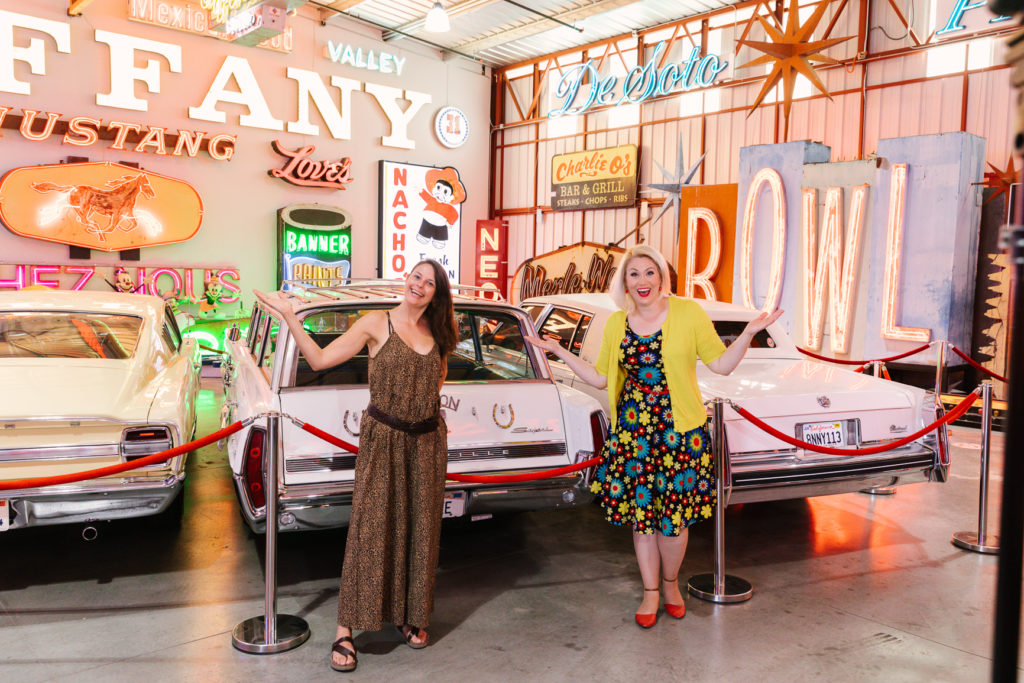
Join Aurelia D’Amore Photography and Holly Gray of Anything But Gray Events as we tour the special space and share how you can hold your next wedding or event at The Valley Relics Museum.
Community Focused
As a nonprofit organization, The Valley Relics Museum is a 501(c)3 with an endeavor to preserve and protect our local history and it’s artifacts while educating the public on the rich history of The San Fernando Valley and surrounding areas. The museum functions and runs off of volunteer staff. This means, all hosted event incomes at the museum aid in continuing its mission of historical appreciation and preservation in the San Fernando Valley. When you host your wedding or event here, you are helping the local preserve its history for generations to come.

Every square inch of this space has something interesting to look at, read about, or take in. One of the reasons I love planning events in museums is because there is essentially a built in experience for your guests to enjoy from start to finish.
Event Rentals
The Valley Relics Museum welcomes weddings, receptions, birthday parties, company parties, reunions, school dances, music video shoots, photo shoots and any other project or event. See more photos of events at The Valley Relics Museum on their Instagram. @valleyrelicsmuseum
- The hourly rate is $385.00 per hour with a 4 hour booking minimum. The hourly rate includes the space only.
- All tables, chairs, linens, catering needs, decor, florals, additional lighting, ect. must be brought in by the the clients.
- LGBTQ+ inclusive.
- There are 2 restrooms (single stall, ADA-accessible) on premises at either side of the building.
- Handicapped accessible.
- Industrial roll Up doors allow for cross breeze ventilation.
- Load in begins after the museum closes at 4pm.
- Much of the museum collections rotates.
- While the car collection can be moved and displayed in the parking lot, some of the collection is stationary and can not be moved.
- WIFI
- Street level access
- Food trucks welcome!
- Event insurance is required.
- Use of the spacious parking lot and ample street parking
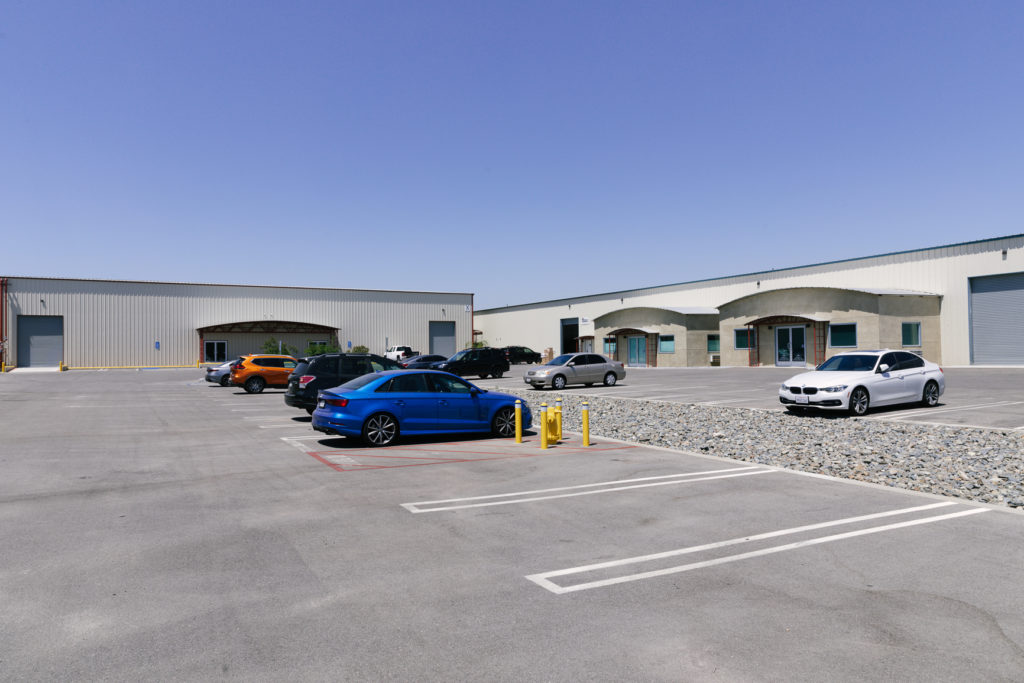
Event Capacity
- (18) 72″ round tables at 12 guests per table, comfortably seats 216 guests.
- (42) 36″ round cocktail tables at 5 guests per table, comfortably seats 210 guests.
- (390) chairs without tables can fit within an aisle space for weddings, conferences, church services, etc.
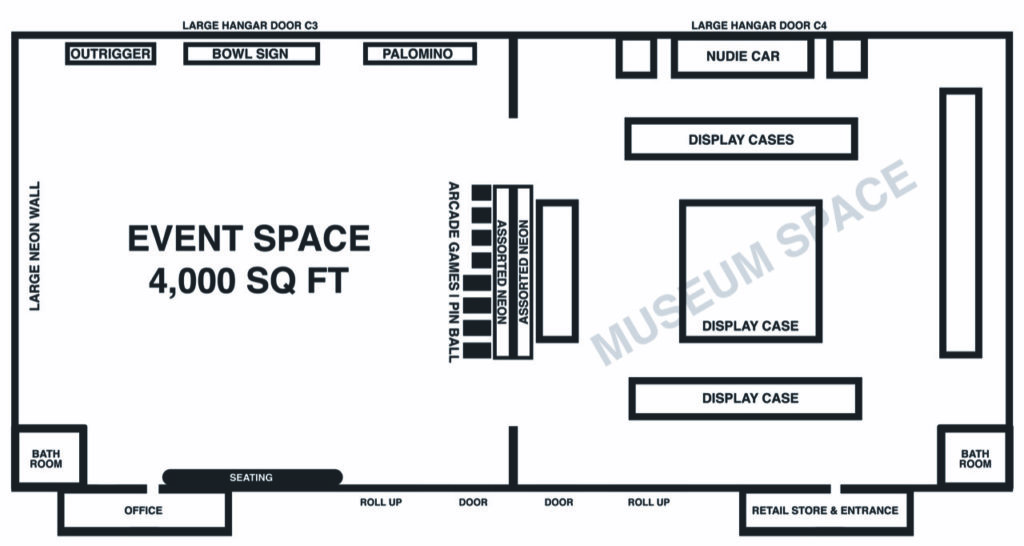
The museum portion is chock full of well manicured display cases of curated historical artifacts, old Hollywood nostalgia, and mementos of the past that will keep your guests entertained from floor to ceiling. Literally! Don’t forget to look up and see additional signage and a large collection of BMX bikes hanging, safely, from the rafters.
From every angle there is something to appreciate at The Valley Relics Museum. While the car collection can be moved and displayed in the parking lot, some of the collection is stationary and can not be moved. And frankly, why would you want to move it?
Notable Names
Isaac Lankershim, the namesake behind one of the San Fernando Valley’s major streets, was a German-born American landowner and pioneer in California born in 1818. In the late 1860s, Lankershim moved to Los Angeles and purchased 60,000 acres fir $115,000 (roughly $2,437,592.52 today) together with other businessmen from San Francisco the two men bought the land from Don Pío de Jesús Pico (aka Pio Pico) a California politician, ranchero, and merchant that served as the last Governor of Alta California (modern day California) under Mexican rule.
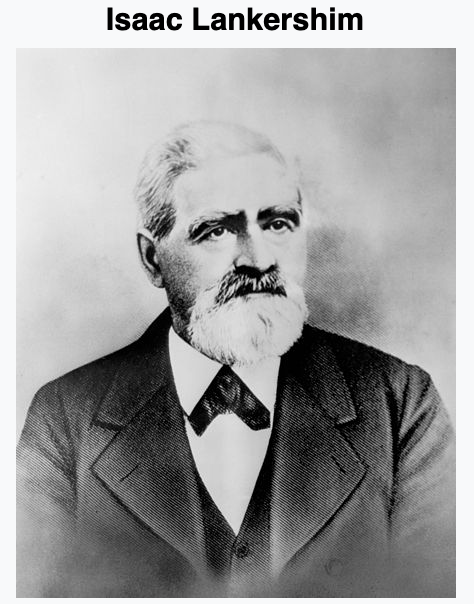
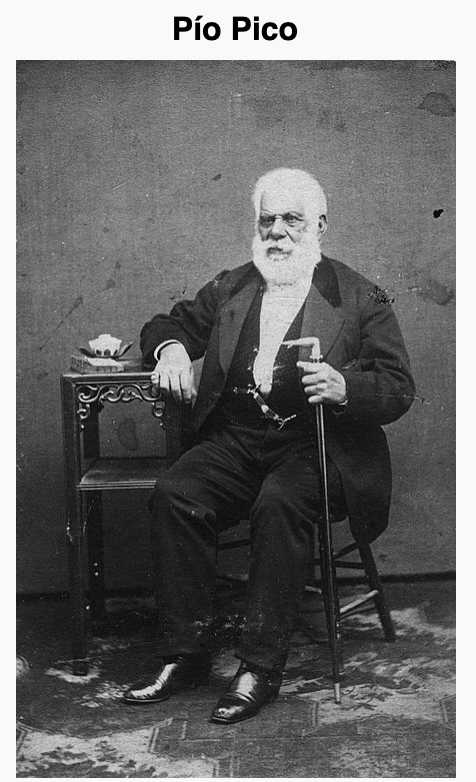
The 405 Freeway
These acres included what is now Woodland Hills, Tarzana, Encino, Sherman Oaks, Van Nuys and North Hollywood. By 1873, the two men raised 40,000 sheep on the ranch. When wool prices fell, they grew wheat instead. To take the wheat from the valley to Santa Monica, he built a wagon path now known as Interstate 405. In 1876, he turned it into a toll road that could make the men additional income. Although today’s 405 is a “freeway” as opposed to a “payway” or toll road, native Angelenos still believe the 405 costs them, not in money, but rather in their sanity!
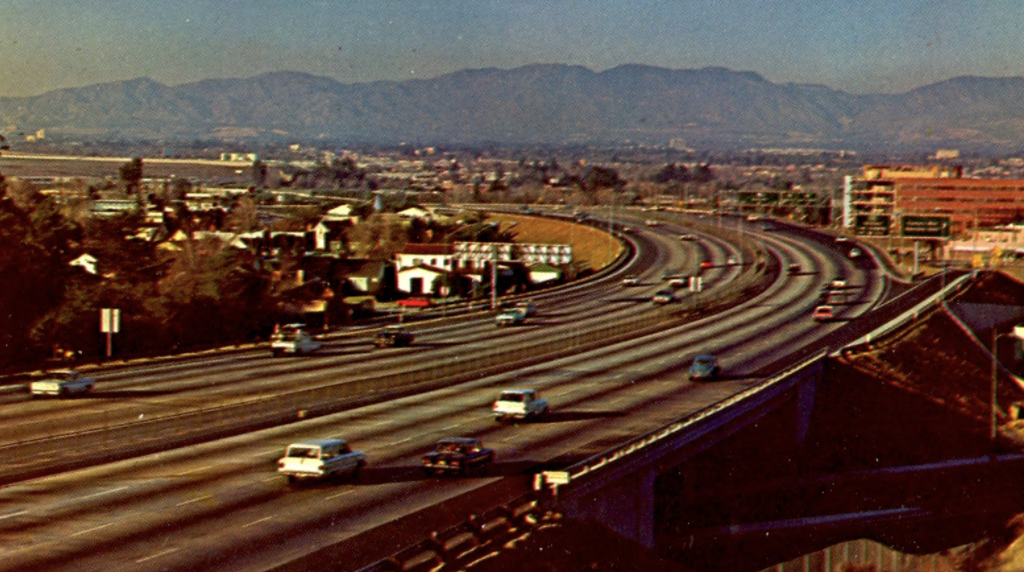

Isaac Van Nuys’ great ranch became the “Van Nuys townsite” and then simply, Van Nuys. No landmark house, statue, or even a formal portrait of the land baron stands. The only thing he left was his name.
The first high school in the valley was located in Van Nuys, and many storefronts still stand today that date from the early 1900’s. There was farming, canning, and the old Union Ice Plant from the days when produce was sent by rail to downtown markets. The Union Ice Plant remains today, next to what is now the Orange Bus Line.
Striking out in the SFV
The sport of bowling played a significant role in the social and recreational life of Post WWII Americans. In Los Angeles, as elsewhere in the U.S., modern bowling centers were constructed in the postwar era in large numbers and particularly in areas of west Los Angeles and the San Fernando Valley.
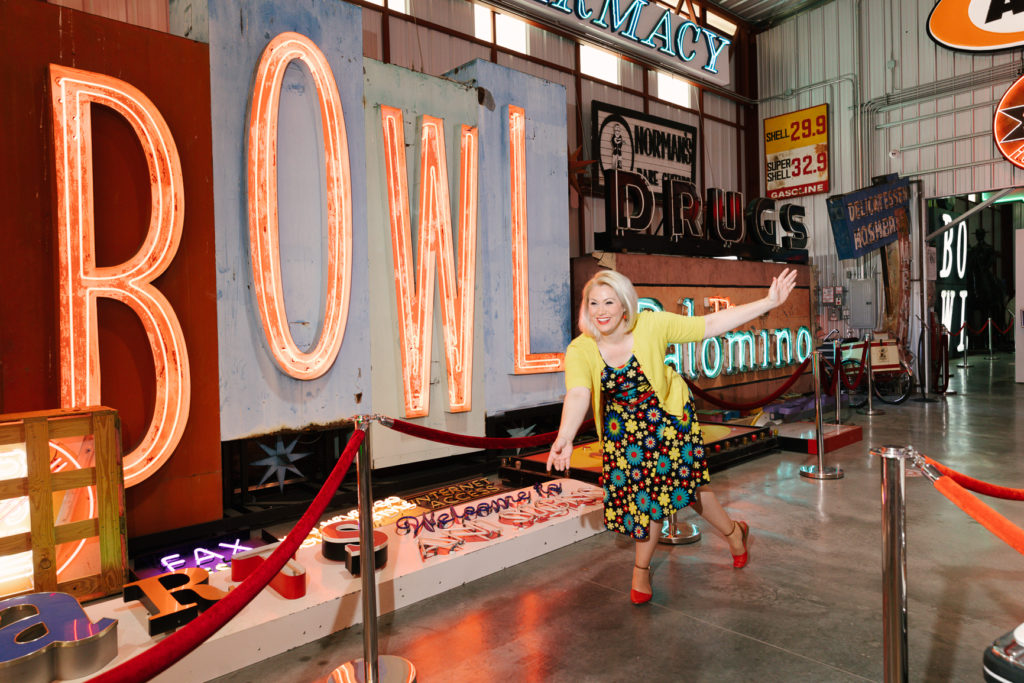
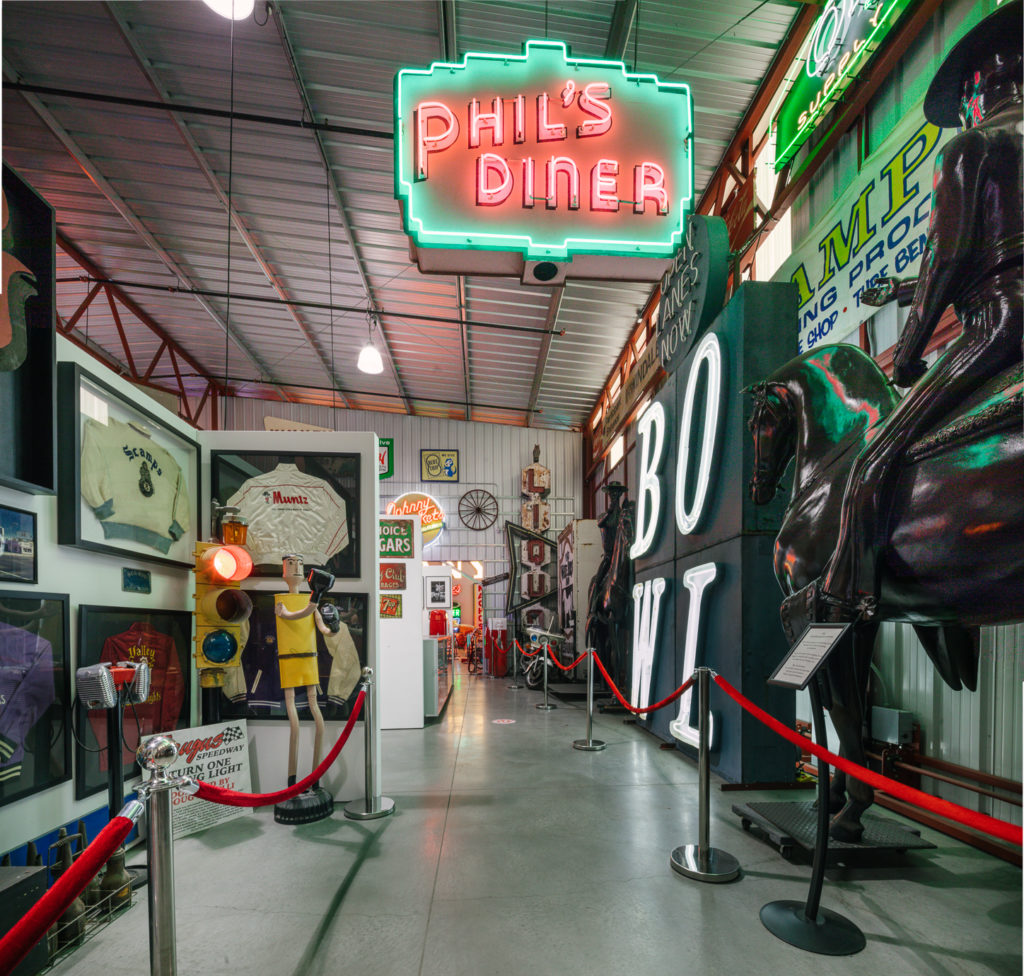
Lighting Up LA
One things you can’t turn away from at The Valley Relics Museum is the Neon and Bulb Signage. Hundreds of neon and bulb signs, large and small, hung and free-standing, line the walls of this luminous place. Neon signs are made of glass tubes bent into letters or shapes and filled with inert gas. When the electric current hits the electrodes in the tubes, electrons flow through the gas, making its atoms glow. In a clear glass tube, argon gas gives off a steel blue light while neon gas produces red light.
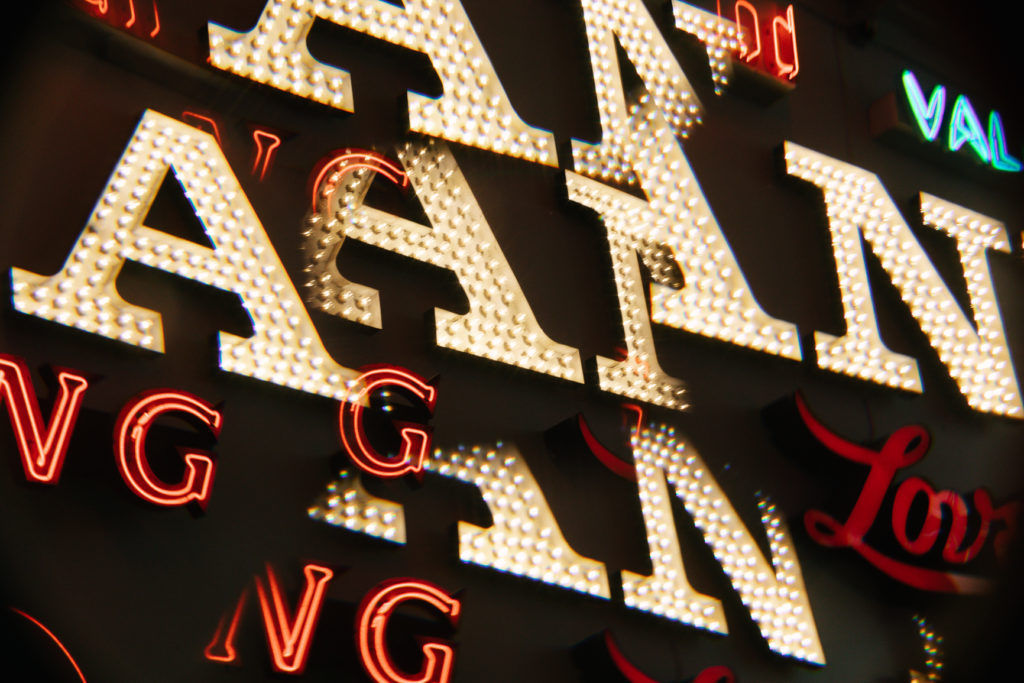
Los Angeles became the birthplace of American neon in 1923 when car dealer Earl C. Anthony imported a pair of neon signs from Paris, France to his downtown Packard dealership. The goal was to get people’s attention and “their crisp bright light” literally stopped traffic. While originally neon signs were electric signs lighted by long luminous gas-discharge tubes that contain rarefied neon or other gases, today’s “neon” signs are as far from their original from. The less expensive lure of LED lighting to the delicate nature of neon gases and glass piping helped to discount this artform.
What may be the oldest surviving neon sign in the United States, still in use for its original purpose, is the sign “Theatre” (1929) at the Lake Worth Playhouse in Lake Worth, Florida.
The Valley Relics Museum prides itself in saving original neon and painted signs that are sadly destined for the wrecking ball or scrap yard during demolitions of memorable Valley establishments. Tommy recently saved the original sign from Oil Can Harry’s — the oldest gay club in Los Angeles and a Valley staple on Ventura Blvd. I personally had many disco-filled Saturday nights on the dance floor there!
While the population of the Valley is roughly 1,540,948 today, imagine what is was like in the early 1800’s, when settlers arrived here to create a better life for themselves and their, usually large, families. Floral blooms, cattle ranching, sheep ranching, large-scale wheat farming, and fruit orchards flourished 220 years ago.
The Valley Old Hollywood
Although we use the label, “Old Hollywood”, so much of the film industry is actually North of the walk of fame in the Valley. A major staple at the height of Old Westerns were “movie ranches”. Ranch sets created specifically for movie production.
There were two kinds of movie ranches, those bought by film companies specifically for location shooting, and ranches created to rent their facilities to smaller studios and production companies that couldn’t afford their own spread.
By far the most popular movie ranch was the Iverson Movie Ranch, in what’s now Chatsworth. Film historians estimate that more than 2,500 motion pictures and television shows shot some or all of their outdoor scenes at the Iverson Ranch.
Fast Food Nation
Fast food restaurants became very popular during the 1950s because families were busy and they needed a place where they could quickly pick up food; people also wanted to be able to get quick food that they could eat in front of their new purchase – the Television. Here are some example of uniforms from McDonald’s and Pioneer Chicken as well as the original ‘Jack head’ ordering system from Jack in the Box. The one in the case is an original (unrestored) and the lumiated one to the left has been refurbished back to its original glory.
The colors red, yellow, and orange have been proven to convince your brain you are hungry. Do you think that is a coincidence that so many fast food companies use this palette in their logos and advertising? I think not!

Where there’s smoke, there’s fire!
It might be hard for millenials to believe, but most major restaurants allowed you to smoke inside during your meal. While this idea seems simple now, it was revolutionary in 1995 when California became the first state to ban smoking in the workplace, including public buildings, indoor work spaces and restaurants. Three years later in 1998, that ban extended to include bars, taverns and gaming clubs. Matches and ashtrays were not only useful items but also showcased themselves as advertising methods.




Do you recognize which Brady kid lived behind this bedroom door?

Whether it’s Canter’s, Art’s, Nate ‘n Al, or Langer’s, LA has some amazing Delicatessens. Roasted beef on rye for me please!
Check out the prices at Jack in the Box! A cheeseburger, fries, and a soda would cost you less than $1 in the early 1960’s.
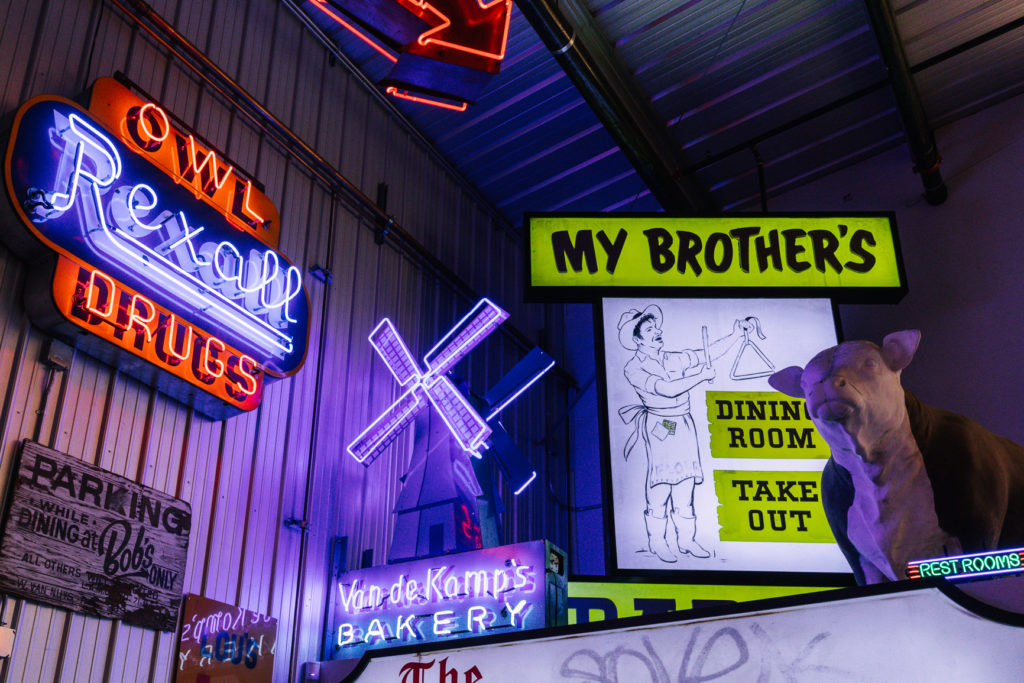
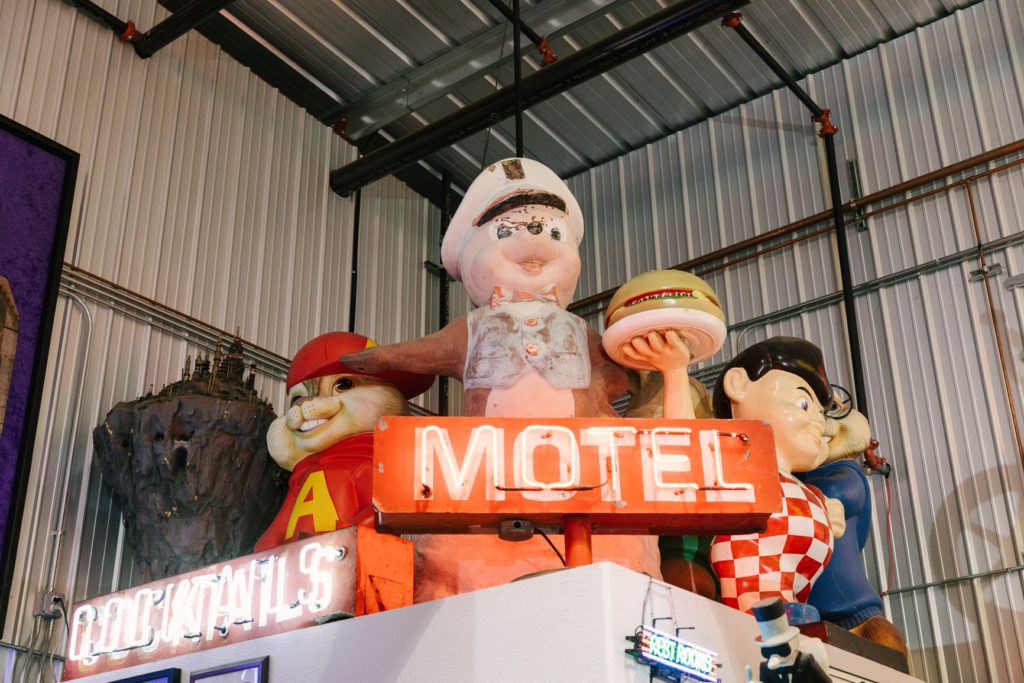
Within the museum is a huge collections of BMX bikes, something owner Tommy Gelinas, is passionate about. BMX, or bicycle motocross, started in the early 1970s when children began racing their bicycles on dirt tracks in Southern California, drawing inspiration from the motocross superstars of the time. The popular pastime of BMX is truly a concept that was “Made in the Valley”.
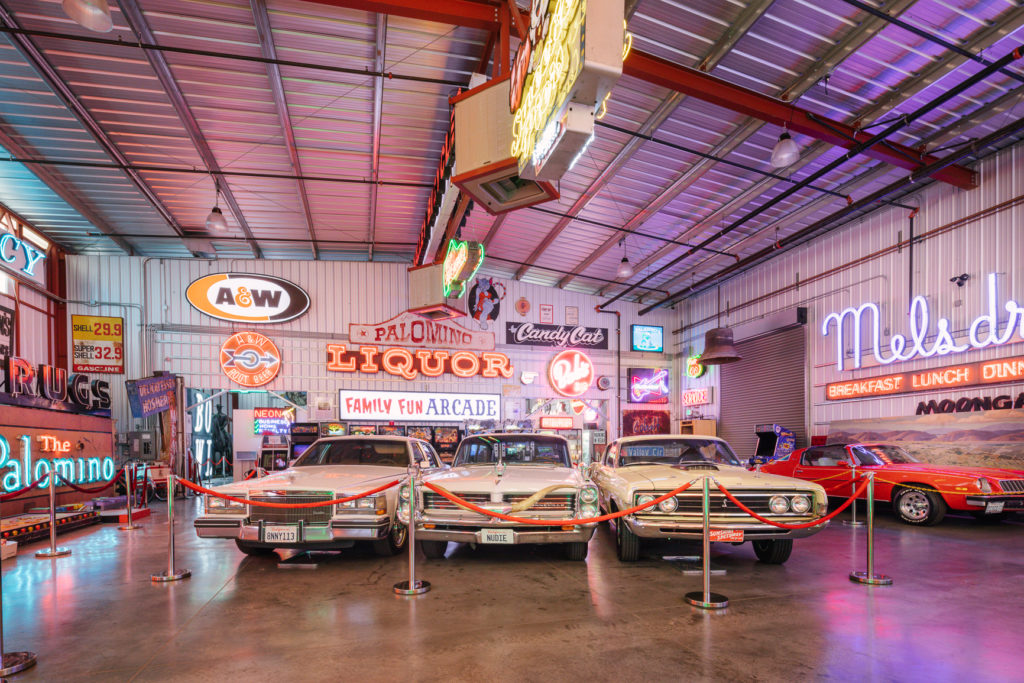
While the neon gives off the majority of the light in the museum, if you wanted to create some more mood lighting, the hanging floodlight can be turned off as well as specific neon signs, running on separate circuits, that gives off a more white to colored light. The industrial doors seen in the left of this photo also roll up completely creating an indoor/outdoor feel to this room, while still maintaining all the colorful ambiance.
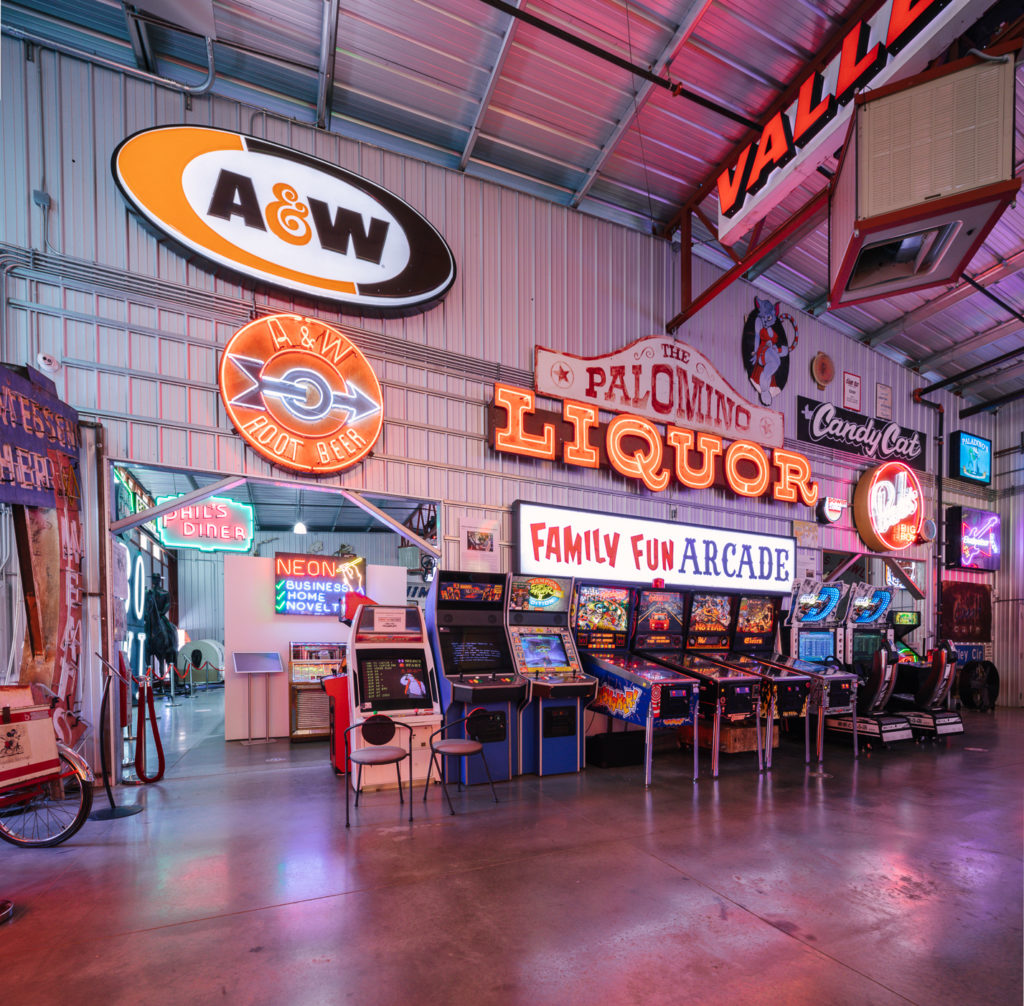
All the arcade and pinballs machines on site are in “free-play” mode and gratis during rented, private events for guests to enjoy throughout the evening.
The Television Obsession
One of the newest highlights in the center of the museum is this salvaged wall of TV’s owned by actor, director, producer, Jack Webb, who is most famous for his role as Sgt. Joe Friday in the television drama Dragnet (which he created). Webb was so obsessed with the ratings of his NBC show being the highest, that he installed multiple TV’s into the wall of him home to be able to watch all the nightly shows on other stations simultaneously. If you look closely at the TV wall, you will see labels with ABC, PBS, Channel 5, Channel 13 as well as 4 clocks for the different time zones. If any other shows were as good, God-forbid, better, his writing team would get an immediate phone call. Mind you, Dragnet aired from 1952 to 1959 and these Sony televisions STILL work! When it comes to TV producers and the televisions their shows play on, as they say, “they don’t make them like that anymore!”
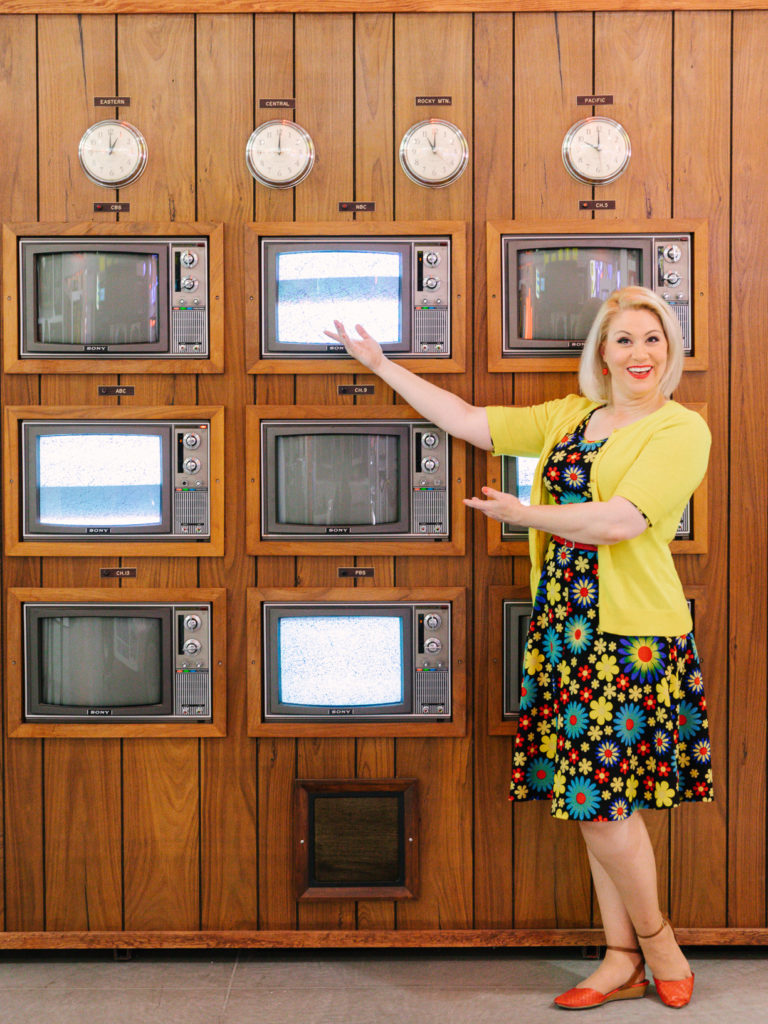

Words to Live By
“Never approach a bull from the front, a horse from the rear, or a fool from any direction.”

For more information on booking your next event or coming in for a tour of The Valley Relics Museum , contact:
Tommy Gelinas at tommy@valleyrelicsmuseum.org
Address: 7900 Balboa Blvd. C3 & C4 Entrance on, Stagg St, Van Nuys, CA 91406
Photos by: Aurelia D’Amore Photography
